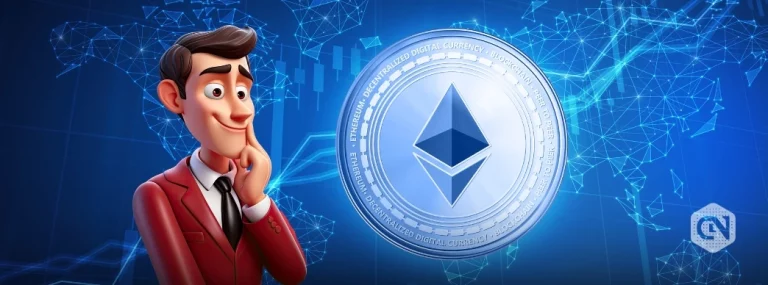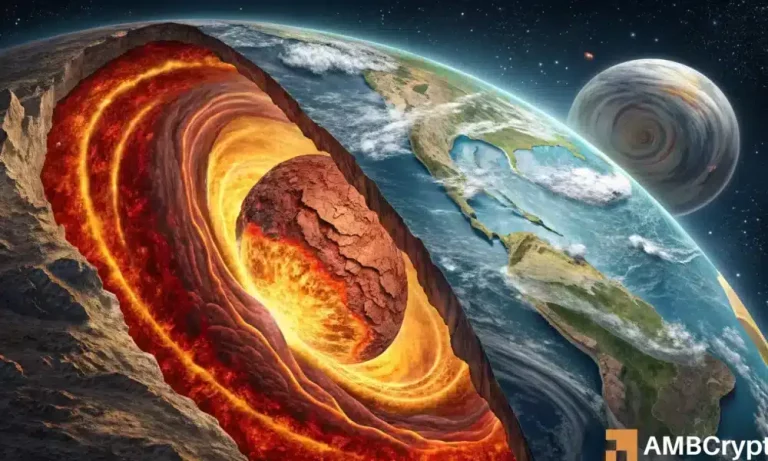
Infinity is a fascinating idea that has intrigued people for centuries. It goes beyond our everyday understanding, pushing us to think about numbers, space, and even time in a whole new way. In this article, we will explore how infinity appears in mathematics, philosophy, science, and art, revealing its many layers and implications. Whether you’re a math enthusiast or just curious, there’s something about infinity that invites everyone to ponder its mysteries.
Key Takeaways
- Infinity challenges our understanding of numbers and limits.
- There are different types of infinity, like countable and uncountable.
- Philosophers and scientists have debated the implications of infinity for centuries.
- Infinity appears in various forms in art and literature, reflecting its endless nature.
- In technology, infinity plays a role in algorithms and data processing.
Understanding Infinity Through Mathematics

The Nature of Infinite Numbers
So, what’s the deal with infinity in math? It’s not just a really, really big number. It’s more like the idea of something that never stops. Think about counting: 1, 2, 3… you could go on forever. That’s infinity in action. It’s a concept that stretches beyond any limit we can imagine.
- Infinity isn’t a number you can do normal math with.
- It represents something without bounds.
- It shows up all over math, from basic counting to crazy calculus.
Countable vs. Uncountable Infinity
Okay, this is where things get interesting. Some infinities are "bigger" than others. Sounds weird, right? Imagine you can count all the whole numbers (1, 2, 3…). That’s an infinite set, and it’s called "countable." Now, think about all the numbers between 0 and 1. There are infinitely many of those too, but it turns out you can’t count them in the same way. That’s "uncountable" infinity. Mind. Blown. The concept of infinity is wild.
Cantor’s Hierarchy of Infinities
Georg Cantor took this idea of different sizes of infinity and ran with it. He showed that there’s not just one infinity, but a whole bunch of them, each bigger than the last. It’s like an infinite ladder of infinities! Each step up the ladder represents a larger, more complex infinity. This is done using set theory and some pretty abstract math. It’s a bit hard to wrap your head around, but it completely changed how mathematicians think about infinity.
Cantor’s work was initially controversial, but it’s now a cornerstone of modern mathematics. It shows that infinity isn’t just one thing, but a vast and complex landscape to explore.
Philosophical Implications of Infinity
Infinity in Ancient Philosophy
Ancient thinkers grappled with infinity, often linking it to the cosmos and the divine. It wasn’t just about numbers; it was about the very nature of existence. Some saw it as a source of chaos, others as the ultimate, unchanging reality. It’s interesting how they tried to make sense of something so beyond human grasp, using the tools they had available at the time.
Modern Philosophical Perspectives
Modern philosophy takes a different approach, often using logic and set theory to explore infinity. We see infinity not just as a concept, but as something that can be rigorously defined and analyzed. This has led to some pretty wild ideas about the nature of reality and our place in it. It’s a far cry from the ancient musings, but the core question remains: what does it all mean?
The Paradoxes of Infinity
Infinity isn’t all smooth sailing; it’s full of paradoxes that can make your head spin. Zeno’s paradoxes, for example, show how motion might be impossible if you break it down into infinitely small steps. These paradoxes aren’t just intellectual games; they challenge our basic assumptions about space, time, and reality.
Here are some common paradoxes:
- Zeno’s Paradox
- Hilbert’s Hotel
- The Banach-Tarski Paradox
Dealing with infinity often feels like trying to catch smoke. Just when you think you’ve got a handle on it, it slips through your fingers, revealing another layer of complexity. It’s a humbling experience, reminding us of the limits of human understanding.
Infinity in Science and Cosmology
The Role of Infinity in Physics
Physics grapples with infinity all the time. Think about it: singularities in black holes, the idea of infinite potential energy, or even just the sheer number of particles in the universe. It’s a headache, but also a really useful tool. For example, calculus, which is super important in physics, relies on the idea of limits approaching infinity to make calculations about motion and change. Sometimes, these infinities point to gaps in our understanding, like when our equations spit out infinite answers that don’t make physical sense. That’s when things get interesting, and we know there’s more to discover.
Cosmological Concepts of Infinity
Cosmology, the study of the universe’s origin and evolution, is basically swimming in infinity. Is the universe infinitely large? Will it expand forever? These are the kinds of questions cosmologists lose sleep over. The concept of dark energy, which makes up a huge chunk of the universe, is pushing the expansion faster and faster, hinting at a potentially endless future. And what about the multiverse? The idea that our universe is just one of infinitely many? It’s mind-bending stuff.
The sheer scale of the cosmos forces us to confront the possibility that some aspects of reality might extend beyond our current ability to measure or comprehend them. This pushes the boundaries of scientific inquiry and challenges our assumptions about the nature of existence.
Infinity and Quantum Mechanics
Quantum mechanics, the physics of the really small, also has its own weird relationship with infinity. Probabilities in quantum systems can stretch out in strange ways, and some interpretations suggest that these probabilities could extend to infinity. This influences outcomes within systems protected by indeterminacy. It’s like the universe is constantly exploring all the possibilities, even the infinitely improbable ones. It’s a reminder that at the most fundamental level, reality is a lot stranger than we think.
Here’s a quick look at some key areas where infinity pops up in quantum mechanics:
- Wave Functions: Describing the probability of a particle’s location can involve infinite possibilities.
- Quantum Entanglement: The interconnectedness of particles, regardless of distance, hints at non-local effects that could be seen as a form of infinity.
- Quantum Field Theory: Dealing with infinite degrees of freedom requires renormalization techniques to handle infinities that arise in calculations.
Exploring Infinity in Geometry

Infinite Dimensions in Geometry
Geometry gets pretty wild when you start thinking about infinity. It’s not just about lines going on forever; it’s about spaces that have an infinite number of dimensions. Imagine trying to visualize that! We’re used to length, width, and height, but what about a fourth, fifth, or even an infinite dimension? It’s mind-bending, but mathematicians use these concepts to model complex systems and solve problems that would be impossible in regular 3D space.
Topology and Infinite Spaces
Topology is all about how shapes can be stretched, twisted, and deformed without fundamentally changing them. Think of a coffee cup turning into a donut – that’s topology in action! When you bring infinity into the mix, things get even stranger. Topologists study infinite spaces, looking at properties like compactness and connectedness. These ideas are super important in areas like string theory and cosmology, where the universe itself might have some pretty weird topological properties.
Fractals and Infinite Patterns
Fractals are those cool patterns that repeat themselves at different scales. A classic example is the Mandelbrot set, which, if you zoom in forever, you’ll always find new and intricate details. This self-similarity is a key feature of fractals, and it’s directly related to the concept of infinity. Fractals aren’t just pretty pictures; they show up all over the place in nature, from coastlines to snowflakes. They’re a great example of how something that seems simple can contain infinite complexity.
Thinking about infinity in geometry can be a real head-scratcher. It challenges our everyday intuitions about space and shape. But it also opens up new ways of understanding the world around us, from the smallest subatomic particles to the largest structures in the universe.
The Journey of Infinity in Literature
Infinity in Poetry and Prose
Literature has always been a playground for exploring the abstract, and infinity is no exception. Poets and prose writers alike have grappled with this concept, using language to try and capture something that inherently defies definition. From epic poems that span vast timelines to short stories that hint at endless possibilities, infinity manifests in diverse forms. It’s not just about length; it’s about the feeling of boundlessness, of ideas stretching beyond the confines of the page.
Cultural Representations of Infinity
Different cultures view infinity through unique lenses, and these perspectives often find their way into literature. Whether it’s the cyclical nature of time in some Eastern philosophies or the Western obsession with linear progress, these cultural frameworks shape how infinity is portrayed. Stories might emphasize eternal recurrence, the infinite potential of the human spirit, or the terrifying prospect of endless nothingness. It’s interesting to see how these themes evolve and adapt across different literary traditions.
Infinity as a Metaphor in Storytelling
Infinity isn’t always a literal element in stories; often, it serves as a powerful metaphor. It can represent limitless love, unending grief, or the boundless potential for change. Authors use the idea of infinity to add depth and resonance to their narratives, inviting readers to contemplate the bigger questions about existence. The best stories use infinity not just as a concept, but as a tool to explore the human condition.
Infinity in storytelling often acts as a mirror, reflecting our deepest fears and aspirations. It challenges us to confront the limits of our understanding and to imagine possibilities beyond the tangible world. This metaphorical use of infinity enriches the narrative, prompting introspection and a broader perspective on life’s complexities.
Artistic Interpretations of Infinity

Infinity in Visual Arts
Visual artists have always been drawn to the idea of infinity. It’s a concept that’s hard to grasp, but artists try to show it through different techniques. Think about endless landscapes that fade into the horizon, or repeating patterns that seem to go on forever. Some artists use mirrors to create the illusion of infinite space, while others use color and light to suggest boundlessness. It’s all about trying to capture something that’s beyond our normal understanding.
Sculptures and Installations of Infinity
Sculptures and installations offer a tangible way to experience infinity. Artists might use materials like glass or metal to create forms that twist and turn endlessly. Imagine walking through an installation that seems to have no beginning and no end. These works often play with our perception of space and time, making us question what’s real and what’s not. An artist-researcher explores human infinity through three-dimensional art.
The Influence of Infinity on Modern Art
Infinity has had a big impact on modern art. From abstract expressionism to minimalism, artists have used the concept to push the boundaries of what art can be. Some artists focus on the process of creation itself, letting the work evolve in an unending way. Others explore the idea of the infinite through repetition and variation.
Modern art often challenges our assumptions about what art should be. By embracing the concept of infinity, artists invite us to think about the world in new and unexpected ways. It’s about questioning limits and exploring possibilities.
Infinity in Technology and Computing
Technology and computing, fields built on precision and defined steps, might seem like odd places to find infinity. But look closer, and you’ll see it’s woven into the very fabric of how these systems work. From algorithms that run forever to the sheer scale of data we generate, infinity plays a surprisingly important role.
Algorithms and Infinite Processes
Think about an algorithm designed to search for a solution. Ideally, it finds it quickly. But what if it doesn’t? Some algorithms are designed to run indefinitely, constantly refining their approach until they get the right answer, or until someone pulls the plug. This potential for endless processing is a form of infinity at work. It’s not about reaching a final number, but about the possibility of continuous operation.
The Concept of Infinite Data
Data is everywhere, and there’s more of it every second. We talk about "big data," but even that term feels limiting. The amount of information we collect, store, and process is growing at an exponential rate.
Consider this:
- Social media posts
- Sensor readings from IoT devices
- Scientific measurements from experiments
Each of these contributes to an ever-expanding pool of data. While we might not literally have infinite storage, the scale is so vast that it presents challenges similar to dealing with infinity. How do you manage it? How do you find what you need? How do you make sense of it all?
Infinity in Artificial Intelligence
AI, especially machine learning, relies heavily on iterative processes. Models are trained on massive datasets, and they constantly adjust their parameters to improve accuracy. This training can, in theory, continue indefinitely, with the model getting closer and closer to perfect performance.
The pursuit of "artificial general intelligence" (AGI) – AI that can perform any intellectual task that a human being can – is, in a way, a pursuit of infinity. It’s about creating a system with unlimited potential, capable of learning and adapting to any situation. While we’re not there yet, the goal itself is rooted in the concept of boundless possibility.
Wrapping Up Our Journey with Infinity
So, there you have it. Infinity is a wild concept that really makes you think. It’s not just about numbers going on forever or the universe stretching out into the unknown. It challenges how we see everything, from math to philosophy and even science. As we wrap up this exploration, it’s clear that infinity isn’t just a number; it’s a doorway to endless questions and ideas. Whether you’re a math whiz or just curious, there’s always more to discover. So, keep that sense of wonder alive and don’t shy away from the mysteries that infinity brings.
Frequently Asked Questions
What is the definition of infinity?
Infinity means something that has no end or limit. It can refer to endless numbers or quantities that go on forever.
How is infinity used in mathematics?
In math, infinity helps us understand concepts like limits, calculus, and different types of numbers, like whole numbers and fractions.
What are countable and uncountable infinities?
Countable infinity refers to sets that can be matched with whole numbers, like the list of all natural numbers. Uncountable infinity is larger and includes things like real numbers that can’t be listed.
Why is infinity important in science?
Infinity is important in science because it helps explain things like the universe’s expansion and concepts in physics, such as black holes and quantum mechanics.
How is infinity represented in art?
In art, infinity can be shown through patterns, shapes, and designs that repeat endlessly, like in certain sculptures or paintings.
Can technology use concepts of infinity?
Yes, technology uses ideas of infinity in areas like computing, where algorithms may deal with infinite loops or large amounts of data.




